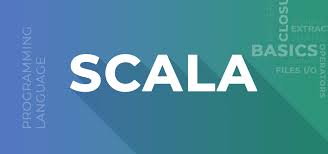关于函数式编程入门示例
近期学校开设了Scala语言的课程,并且老师布置了相关作业,我对这门课学习的质量和动力全靠老师的负责程度,感叹一下,国外老师是真的认真,作业提交均需要在github上建立仓库,并且每次作业都需要创建一个PR,然后老师会进行review,如果通过则合并到主分支,否则提出修改意见,学生再进行修改,如此反复,直到通过为止。学习这门语言给我带了极大的痛苦,因为这门语言的语法和Python、Java、C/C++、JavaScript等语言的语法差异非常大。
函数式编程
在敲了多年的Python、C/C++、Java之后,我原以为自己对接触一门新的语言会比较快的上手,但是实际上,我弄错了编程语言和编程范式之间的关系。接触Scala离不开所谓的函数式编程,而函数式编程又离不开所谓的函数,理论的东西我也说不清楚,因为我只是非常浅显的入门而已。
示例
从示例开始记录属于个人习惯,直接展示Homework2的有理数实现作为示例。
1
2
3
4
5
6
7
8
9
10
11
12
13
14
15
16
17
18
19
20
21
22
23
24
25
26
27
28
29
30
31
32
33
34
35
36
37
38
39
40
41
42
43
44
45
46
47
48
49
50
51
52
53
54
55
56
57
58
59
60
61
62
63
64
// `x` and `y` are inaccessible from outside
class Rational(x: Int, y: Int):
// Checking the precondition. Is fails then throws `IllegalArgumentException`
require(y > 0, "Denominator must be positive")
def this(x: Int) = this(x, 1)
val numer = x / g
val denom = y / g
// Defines an external name for a definition
@targetName("less than")
// Annotation on a method definition allows using the method as an infix operation
infix def <(that: Rational): Boolean =
this.numer * that.denom < that.numer * this.denom
@targetName("less or equal")
infix def <=(that: Rational): Boolean =
this < that || this == that
@targetName("greater than")
infix def >(that: Rational): Boolean =
!(this <= that)
@targetName("greater or equal")
infix def >=(that: Rational): Boolean =
!(this < that)
@targetName("addition")
infix def +(that: Rational): Rational =
Rational(this.numer * that.denom + that.numer * this.denom, this.denom * that.denom)
@targetName("negation")
infix def unary_- : Rational = Rational(-this.numer, this.denom)
@targetName("substraction")
infix def -(that: Rational): Rational = this + -that
@targetName("multiplication")
infix def *(that: Rational): Rational = Rational(that.numer * this.numer, that.denom * this.denom)
@targetName("devision")
infix def /(that: Rational): Rational = this * that.reciprocal
// Finding the reciprocal of a fraction
def reciprocal: Rational =
if numer < 0 then Rational(-denom, -numer) else Rational(denom, numer)
override def toString: String = s"${this.numer}/${this.denom}"
@tailrec
private def gcd(a: Int, b: Int): Int =
if b == 0 then a else gcd(b, a % b)
private lazy val g = gcd(abs(x), y)
override def equals(other: Any): Boolean = other match
case that: Rational =>
this.numer * that.denom == that.numer * this.denom
case _ => false
override def hashCode: Int = 31 * numer + denom
end Rational
这个示例主要目的是使用Scala的语法特性实现一个有理数类,并且实现有理数之间的运算。
其中既展示了Scala的一些语法,也初步展示了函数式编程的一些基础概念。
不可变性(Immutability)
Rational类使用不可变值(val numer,val denom)而不是可变状态的变量。一旦创建了有理数对象,其分子和分母就不会再改变。
纯函数(Pure Functions)
方法如+、-、*和/不会修改现有对象,而是返回新的Rational实例。例如:
- r1 + r2创建一个新的Rational,而不是改变r1或r2
- -的实现重用了+和一元否定,展示了纯函数的组合
惰性求值(Lazy Evaluation)
private lazy val g展示了惰性求值——最大公约数只在首次需要时计算,而不是在对象创建时。这在该值不总是被使用的情况下可以提高性能。
尾递归(Tail Recursion)
gcd方法使用尾递归(标记为@tailrec)而不是迭代循环,这在函数式编程中很常见。Scala编译器会优化尾递归函数以避免栈溢出。
模式匹配(Pattern Matching)
equals方法使用模式匹配(other match case that: Rational => …)来处理不同类型,这是函数式编程的基本构造。
运算符重载(Operator Overloading)
代码使用Scala定义运算符作为方法的能力,使有理数行为像内置数值类型,并允许以自然符号书写数学表达式。运算符重载的能力在其他语言也很常见,如C++、Python等都支持。
单元测试
单元测试是软件开发中非常重要的一部分,Scala的单元测试框架也非常成熟,这里使用ScalaTest进行单元测试。
1
2
3
4
5
6
7
8
9
10
11
12
13
14
15
16
17
18
19
20
21
22
23
24
25
26
27
28
29
30
31
32
33
34
35
36
37
38
39
40
41
42
43
44
45
46
47
48
49
50
51
52
53
54
55
56
57
58
59
60
61
62
63
64
65
66
67
68
69
70
71
72
73
74
75
76
77
78
79
80
81
82
83
84
import arbitraries.{given Arbitrary[Int], given Arbitrary[Rational], given Arbitrary[Integer]}
property("throw exception due to zero denominator") = forAll { (numer: Int) ⇒
throws(classOf[IllegalArgumentException]) {
Rational(numer, 0)
}
}
property("throw exception due to negative denominator") = forAll { (numer: Int, kindaDenom: Int) ⇒
throws(classOf[IllegalArgumentException]) {
Rational(numer, -abs(kindaDenom))
}
}
property("check that rational number is simplified") = forAll { (numer: Int, int: Int) ⇒
val denom = abs(int) + 1
val rational = Rational(numer, denom)
rational.numer == (numer / gcd(abs(numer), denom)) && rational.denom == (denom / gcd(abs(numer), denom))
}
property("check equals") = forAll { (left: Rational, right: Rational) ⇒
(left == right) == (left.numer == right.numer && left.denom == right.denom)
}
property("less then") = forAll { (left: Rational, right: Rational) =>
(left < right) == (left.numer * right.denom < right.numer * left.denom)
}
property("less or equal") = forAll { (left: Rational, right: Rational) =>
(left <= right) == ( left < right || left == right)
}
property("greater") = forAll { (left: Rational, right: Rational) =>
(left > right) == !(left <= right)
}
property("greater or equal") = forAll { (left: Rational, right: Rational) =>
(left >= right) == ( left > right || left == right)
}
property("negation") = forAll { (rational: Rational) =>
-rational == Rational(-rational.numer, rational.denom)
}
property("addition") = forAll { (left: Rational, right: Rational) =>
left + right == Rational(
left.numer * right.denom + right.numer * left.denom,
left.denom * right.denom
)
}
property("subtraction") = forAll { (left: Rational, right: Rational) =>
left - right == Rational(
left.numer * right.denom - right.numer * left.denom,
left.denom * right.denom
)
}
property("multiplication") = forAll { (left: Rational, right: Rational) =>
left * right == Rational(
left.numer * right.numer,
left.denom * right.denom
)
}
property("division by positive") = forAll { (left: Rational, numer: PositiveInteger, denom: PositiveInteger) =>
val right = Rational(numer, denom)
left / right == Rational(left.numer * right.denom, left.denom * right.numer)
}
property("division by negative") = forAll { (left: Rational, numer: NegativeInteger, denom: PositiveInteger) =>
val right = Rational(numer, denom)
val sign = signum(left.denom * right.numer)
left / right == Rational(left.numer * right.denom * sign, abs(left.denom * right.numer))
}
property("division by zero") = forAll { (left: Rational, int: PositiveInteger) =>
throws(classOf[IllegalArgumentException]) {
left / Rational(0, int)
}
}
以上单元测试的内容属于被老师挖空后,我根据要求补全的,使用ScalaTest的forAll方法进行单元测试,也是修改了好几遍才达到要求,老师要求是Scala需要满足函数式编程的优雅特性,还需要保持Scala代码风格简约,说实话写这样的代码对于其他面向过程和面向对象的语言来说,确实有点困难,需要转变思维。
